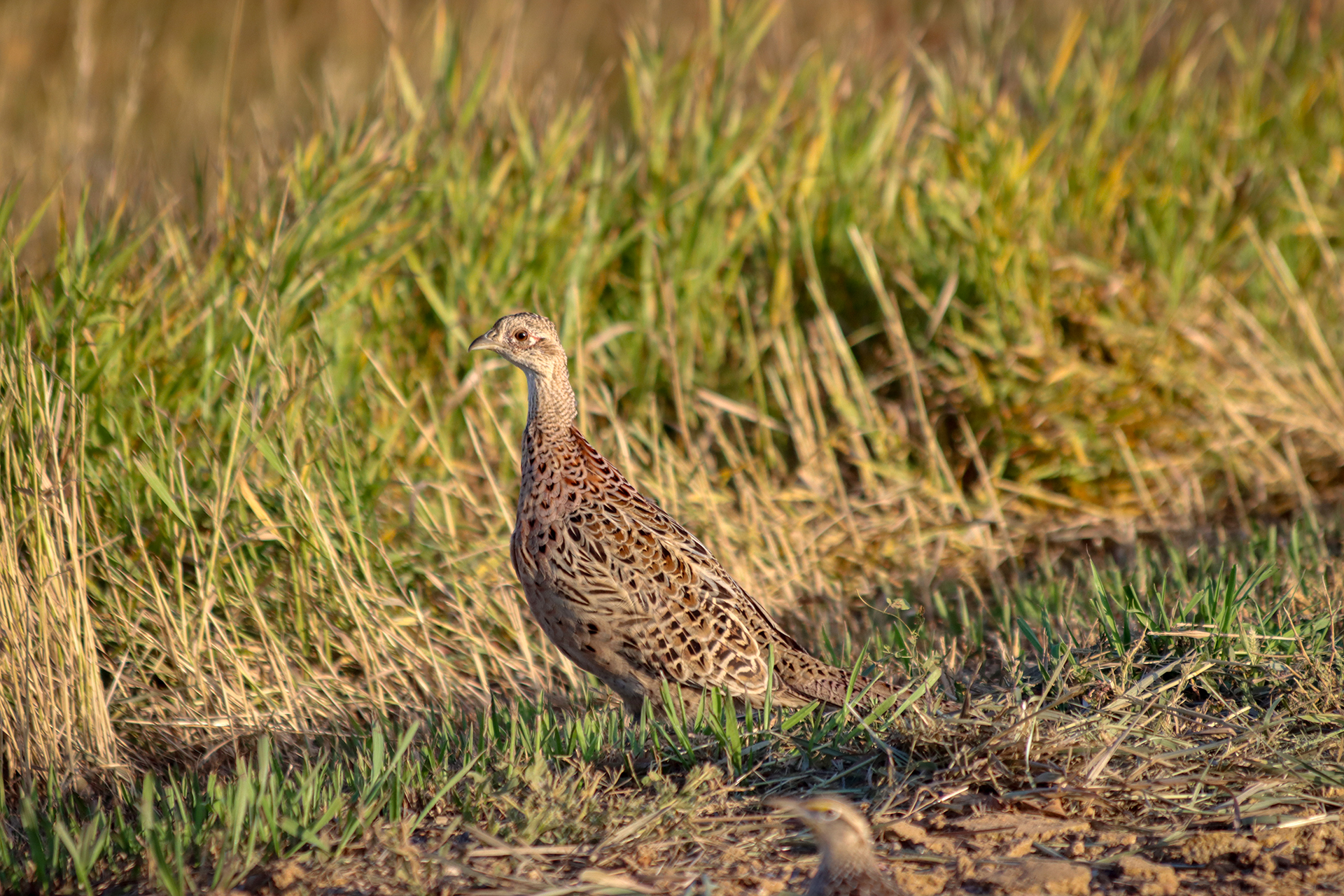There’s a tradition shared among many fledgling pheasant hunters of marching across fields in long ranks. The fresh blaze-clad neophytes evenly spaced so that no bird can leak between hunters for escape. Marchers close on a similarly spaced stationary line of blockers. It’s a regimented process meant to maximize flushes and shooting with minimal personal exertion or required working dogs.
The strategy behind this coordinated procession is that no bird will be bold enough to avoid flight. Pheasant are notorious runners. Though many a produced hunting video portrays them attempting to avoid capture via flight, wild pheasants’ preferred method of escape is always afoot.
The visual similarities between genders of many upland game birds are slight — a minor color difference on a throat patch, the alignment of a few bars on a tail feather. But the Ring-necked Pheasant has the most divergent appearance between genders of all other upland game birds. Males sport garish maroons, blues, iridescent purples and a stark white ring — and let’s not forget the prominent tail feathers. In contrast, hens wear a subtle scheme more aligned with the fall cover that surrounds them — mottled buff in hue. Side-by-side the sexes are so visually different, they could almost be mistaken for different species.
Even with what may seem unmistakable dissimilarity, the Orange Army seeks to insure proper identification by all the enlisted. When a male pheasant flushes, it’s met with hollers of “Rooster!” — though some prefer yelling the more gender specific term “Cock.” The battle cry expands from the originator across the lines followed by a hale of gunfire. It’s how many first learned to hunt pheasant, and some never evolve beyond this method.
But this season, the scream and shoot tradition may be in jeopardy. In 2020, the party hunt may prove deadly to more than just birds. The COVID 19 virus could endanger pheasant identification for all the blaze battle lines. Screaming may be all but canceled in order to prevent the spread of airborne pathogens. According to a recent study published in Scientific Reports, the louder one speaks the more aerosol particles are produced. Yelling “Rooster” with that hard consonant germ generating ’T’ is certain to be a record particle producer likely more dense than the army’s shot pattern. It remains to be seen whether the ranks will be capable of properly identifying birds without audible confirmation from their peers.
In the new age of appropriate social distancing, the lines of shooters will certainly be challenged to stay in step. Safely spaced marchers and blockers may not prevent pheasant from escaping.
Scientist and associate professor Lydia Bourouiba of MIT believes the virus can travel further than previously thought. Her lab explores the effects of exhalations, such as coughing and sneezing, which have documented peak exhalation speeds that can reach between 33 to 100 feet per second. And the resulting virus-laden particle cloud can span approximately 23 to 27 feet. Multiply this by dozens of misaligned screaming marchers and that cloud becomes a viral storm.
It will be interesting to see the updated guidelines from organizations promoting the scream and shoot method of hunting. It’s almost a certainty that state health officials will be getting involved and guidance from the Center for Disease Control is imminent. There are rumors that the mantra of “Yell Rooster!” will be replaced by “Learn How to Identify Birds Before Hunting!” — certainly less succinct and catchy, but once printed and promoted on blaze t-shirts it should take hold.
There’s also a less likely scenario where the lasting lessons and effects of COVID spark a renaissance in solo and silent pheasant hunting. It remains to be seen if there are enough disciples of these methods to convert entire armies.








